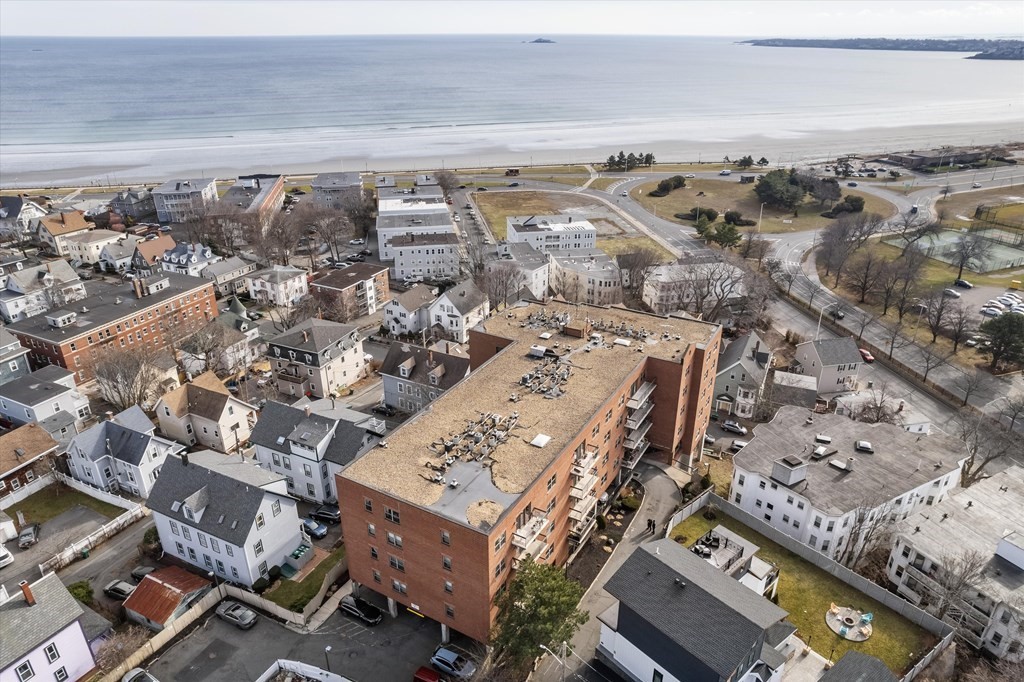Intro
When a flat roof on a condo building starts showing signs of wear and tear, the knee-jerk reaction is often to consider a full replacement. While replacing the roof may seem like the obvious solution, it’s not always the most prudent or cost-effective approach. In fact, with the right techniques and materials, repairing your flat roof can save your condo association hundreds of thousands of dollars while ensuring the roof’s integrity and performance for many years to come.
This post will delve into the technical aspects of flat roof repairs, demonstrating how sophisticated repair methods can address common issues and significantly extend the lifespan of your roof. By understanding these techniques, condo boards and property managers can make informed decisions that protect both the building and the financial health of the community.
Understanding the Anatomy of a Flat Roof
To fully appreciate the benefits of repairing a flat roof, it’s essential to understand its structure and the common issues that arise over time. A flat roof typically consists of several layers, each with a specific function:
- Structural Decking: This is the base layer of the roof, often made from concrete, wood, or steel. It provides the structural support for the roof and is crucial for the roof’s overall stability.
- Vapor Barrier: Placed directly above the decking, the vapor barrier prevents moisture from inside the building from penetrating into the insulation layer, which could otherwise lead to condensation and rot.
- Insulation Layer: The insulation layer helps regulate the temperature within the building by minimizing heat transfer. It’s typically made from materials like polyisocyanurate, extruded polystyrene (XPS), or expanded polystyrene (EPS).
- Roof Membrane: This is the waterproof layer that protects the building from external elements. Common materials for flat roof membranes include modified bitumen, EPDM (Ethylene Propylene Diene Monomer), TPO (Thermoplastic Olefin), and PVC (Polyvinyl Chloride).
- Protective Coating or Ballast: Some flat roofs have an additional protective layer or ballast (such as gravel) that shields the membrane from UV rays, mechanical damage, and weathering.
The Case for Repair: Technical Insights
Flat roofs, while durable, are not immune to the effects of time, weather, and mechanical stress. However, most issues that arise can be effectively addressed through targeted repair strategies, preserving the roof’s functionality without the need for costly replacement. Here’s how:
1. Reinforcement of the Membrane
One of the most common issues with flat roofs is degradation of the roofing membrane, which can occur due to UV exposure, thermal cycling, or physical damage. Rather than replacing the entire membrane, targeted reinforcement can be applied to extend its life.
- Modified Bitumen Repair: If your flat roof uses a modified bitumen membrane, the repair process often involves the application of additional layers of bitumen in damaged areas. This can be done using a cold-applied adhesive or a torch-applied method, depending on the roof’s specifications. The new layers are seamlessly integrated with the existing membrane, restoring waterproofing capabilities.
- EPDM Patching: EPDM membranes are particularly durable, but if they develop tears or punctures, a specialized patching technique can be used. The damaged area is cleaned and primed, and a compatible EPDM patch is applied using a bonding adhesive. Once cured, the patch becomes part of the membrane, restoring its integrity without compromising flexibility.
- TPO and PVC Welding: For TPO and PVC membranes, hot-air welding is the preferred method for repairs. This technique involves using a hot-air welder to melt the edges of a patch and the existing membrane, fusing them together to create a seamless bond. This method is especially effective because it restores the waterproof barrier without relying on adhesives that might degrade over time.
2. Advanced Roof Coatings
Roof coatings offer a sophisticated solution for prolonging the life of a flat roof. These coatings are not merely surface treatments; they are engineered to enhance the roof’s performance in several key areas.
- Silicone Coatings: Silicone coatings are highly effective for roofs that experience ponding water. Unlike other coatings, silicone is inherently waterproof and resistant to the degrading effects of constant water exposure. The application process involves cleaning the roof thoroughly and then applying the coating in a uniform layer, typically with a sprayer or roller. Once cured, the silicone coating forms a durable, flexible membrane that protects against UV rays, rain, and temperature fluctuations.
- Acrylic Coatings: Acrylic coatings are prized for their reflectivity and energy efficiency. These coatings can significantly reduce the roof’s surface temperature by reflecting solar radiation, which not only extends the life of the roof but also reduces cooling costs. Applied in a similar manner to silicone, acrylic coatings are especially beneficial in hot climates where heat gain is a concern. They are also water-based, making them easier to apply and environmentally friendly.
- Polyurethane Coatings: Known for their toughness and abrasion resistance, polyurethane coatings are ideal for flat roofs with high foot traffic or mechanical equipment. These coatings provide a resilient surface that can withstand physical impact and heavy use, all while maintaining excellent waterproofing properties. They are typically applied in two layers: a base coat and a topcoat, ensuring maximum protection.
3. Flashing and Drainage Improvements
The proper functioning of a flat roof depends heavily on its drainage system and the quality of its flashing. Repairs in these areas can address leaks and water pooling, two of the most common issues with flat roofs.
- Flashing Repairs: Flashing seals the joints and edges of a flat roof, preventing water ingress where the roof meets walls, chimneys, or other structures. Over time, flashing can become loose, corroded, or damaged. Repairing flashing typically involves removing the old flashing material and installing new, high-quality flashing that is properly sealed and secured. In some cases, a liquid-applied flashing system can be used to create a seamless, waterproof transition between the roof and adjacent surfaces.
- Drainage Enhancements: Poor drainage is a leading cause of roof failure on flat roofs. Simple repairs can involve cleaning and reconfiguring existing drains to ensure they function properly. In more severe cases, installing additional roof drains or scuppers can alleviate ponding water. For roofs with chronic drainage issues, creating additional slope with tapered insulation might be necessary. This involves adding layers of insulation that create a gentle incline towards the drains, promoting better water flow and preventing ponding.
4. Infrared Scanning and Targeted Repairs
Infrared scanning technology has revolutionized the way roof repairs are approached. This non-invasive method allows for the precise identification of moisture intrusion and insulation deficiencies without tearing up the entire roof.
- How It Works: Infrared cameras detect temperature variations across the roof surface. Areas where moisture is trapped will retain heat longer than dry areas, appearing as hot spots on the infrared scan. By pinpointing exactly where moisture has infiltrated the roof system, repairs can be targeted to those areas, avoiding unnecessary work and expense.
- Benefits: Infrared scanning not only identifies the exact locations needing repair but also provides a clear picture of the roof’s overall condition. This allows property managers to prioritize repairs and make informed decisions about maintenance schedules, ensuring that the roof remains in optimal condition without the need for premature replacement.
5. Seam and Joint Reinforcement
Seams and joints in flat roofs are particularly vulnerable to water infiltration, especially on older roofs where adhesives or welding may have weakened over time. Reinforcing these areas can prevent leaks and extend the roof’s life significantly.
- Re-Welding Seams: For TPO and PVC roofs, re-welding seams using a hot-air welder can restore the waterproof integrity of the roof. This process involves carefully heating the existing seam until it softens and then re-pressing it to form a solid, watertight bond.
- Adding Cover Strips: Another technique involves applying cover strips made from compatible roofing material over existing seams. These strips are adhered using specialized bonding agents or welding, providing an additional layer of protection against water penetration.
Long-Term Savings and Benefits of Repair
The immediate financial savings from repairing rather than replacing a flat roof are substantial, but the long-term benefits are equally compelling. Here’s why repair is often the smarter choice:
1. Cost Efficiency
Repairing a flat roof can cost as little as 10-30% of what a full replacement would. This is particularly important for condo associations where budget constraints are a reality. By opting for repairs, associations can allocate funds more effectively, addressing other maintenance needs or building improvements.
2. Minimizing Disruption
Full roof replacement is a major project that can cause significant disruption to residents, including noise, debris, and restricted access to parts of the building. In contrast, most repair methods are far less intrusive, allowing life in the condo community to continue with minimal interruption.
3. Environmental Impact
Roof replacement generates a significant amount of waste, as old materials are removed and discarded. Repairing the existing roof is far more sustainable, reducing the volume of materials sent to landfills and conserving resources by extending the life of the current roof.
4. Energy Efficiency
Modern repair techniques often improve a roof’s energy efficiency, whether through the application of reflective coatings, improved insulation, or enhanced drainage. These improvements can lead to lower energy costs and a more comfortable living environment for residents.
5. Delaying the Need for Replacement
By addressing issues as they arise and maintaining the roof with regular repairs, the need for a full replacement can be delayed by many years, sometimes even decades. This not only saves money in the short term but also allows for better financial planning and budgeting for the eventual replacement.
When it comes to flat roofs, the mantra should be “Repair first, replace later.” By understanding the technical aspects of flat roof repair and working with experienced professionals who can accurately diagnose and address issues, condo associations can avoid the significant expense of roof replacement and instead invest in extending the life of their existing roof. This approach not only saves money but also minimizes disruption, reduces environmental impact, and ensures the continued protection of the building and its residents.
Before deciding on a costly roof replacement, consider scheduling a professional roof inspection that includes infrared scanning and a thorough evaluation of the roof’s condition. By exploring repair options first, you might discover that your roof has many more years of life left—saving your condo association hundreds of thousands of dollars in the process.


0 Comments